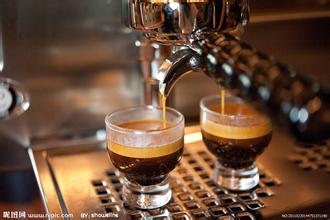Taste characteristics of Tiebika Coffee Grinding scale in Manor production area
Taste characteristics of Tiebika Coffee Grinding scale in Manor production area
I. varieties and characteristics of coffee in Yunnan
At present, the varieties commonly cultivated in Yunnan are Cartimo 7963 (Catimor), Cartimo P series, Bobang and Bobang varieties (boubon), Tibika and Tibika varieties (typica).
According to my long-term baking practice, our understanding of these commonly cultivated varieties is as follows.
Katimo 7963, with smaller particles and higher yield. Under the condition of balanced taste baking, baked beans show high fruit taste, moderate acidity, good sweetness, medium mellow, good cleanliness, and some market demand.
Cartimo P series, with thick granules, P4 is currently the main variety of Yunnan alpine coffee. When P series coffee is roasted moderately, it has super high sweetness, high caramel conversion rate, good taste clarity, good cleanliness, vanilla and fruit flavor, high acidity and full aroma, so it is the most impressive variety evaluated by evaluation institutions according to the evaluation standard (COE evaluation table). The best equilibrium point of Cartimer P series roasted in medium and deep depth, the deep roasted Cartimo P series coffee will get higher caramel conversion, higher aroma content, good acidity correction, thickening effect and performance after concentrated extraction, and become the best ingredient and base material for espresso beans.
As we all know, in the coffee growing industry, the rainy season determines the coffee harvest season. Throughout Colombia, the main harvest season of Colombian coffee is from October to February of the following year, and the secondary harvest season is from April to September each year. It is generally believed that the quality of the main production season is better than that of the secondary production season.
In everyone's impression, Colombia is only a major coffee trading country, but in fact, Colombia is also rich in fine coffee. At present, Colombian coffee beans account for 30% of the national output, and around the year 2000, the proportion is less than 5%. Thus it can be seen that the market for fine coffee has developed rapidly in recent years.
Boutique coffee bean producing areas are mostly concentrated in south-central Colombia, including HUILA, NARINO, TOLIMA, VALLE DEL CAUCA, CAUCA and other areas, which are mainly volcanic geology.
Commercial coffee bean producing areas are concentrated in the central and northern regions, including ANTIOQUIA (the capital Medillin), QUINDIO (the capital Armenia) and CALDAS (the capital Manizales). The first letter of the capital of these three regions, referred to as "MAM", is the largest coffee producing area in Colombia, which is relatively low in elevation.

Important Notice :
前街咖啡 FrontStreet Coffee has moved to new addredd:
FrontStreet Coffee Address: 315,Donghua East Road,GuangZhou
Tel:020 38364473
- Prev

Kenyan coffee has the flavor description of those manor giraffe manor price producing areas.
Kenyan coffee has those manor giraffe manor price description taste coffee producing country profile: Kenyan coffee variety was first brought to Kenya to grow is Bourbon bourbon, in the 1950s, the then agricultural research institution (Scott Laboratory) through unremitting efforts, selected two excellent hybrids SL-28, SL-34, British
- Next

Flavor description of Arabica Coffee introduction of varieties produced by grinding scale
Arabica coffee flavor description grinding scale production area Bourbon is almost entirely round beans, beans are a little smaller than tin card, late ripening, but the yield is 30% more than tin card. It is suitable for growing above 1200 meters above sea level, and its flavor is obviously more prominent than those below 1000 meters, but bourbon has a disadvantage that it will rest for a year as a result. The round bourbon is full of vitality.
Related
- Detailed explanation of Jadeite planting Land in Panamanian Jadeite Manor introduction to the grading system of Jadeite competitive bidding, Red bid, Green bid and Rose Summer
- Story of Coffee planting in Brenka region of Costa Rica Stonehenge Manor anaerobic heavy honey treatment of flavor mouth
- What's on the barrel of Blue Mountain Coffee beans?
- Can American coffee also pull flowers? How to use hot American style to pull out a good-looking pattern?
- Can you make a cold extract with coffee beans? What is the right proportion for cold-extracted coffee formula?
- Indonesian PWN Gold Mandrine Coffee Origin Features Flavor How to Chong? Mandolin coffee is American.
- A brief introduction to the flavor characteristics of Brazilian yellow bourbon coffee beans
- What is the effect of different water quality on the flavor of cold-extracted coffee? What kind of water is best for brewing coffee?
- Why do you think of Rose Summer whenever you mention Panamanian coffee?
- Introduction to the characteristics of authentic blue mountain coffee bean producing areas? What is the CIB Coffee Authority in Jamaica?

